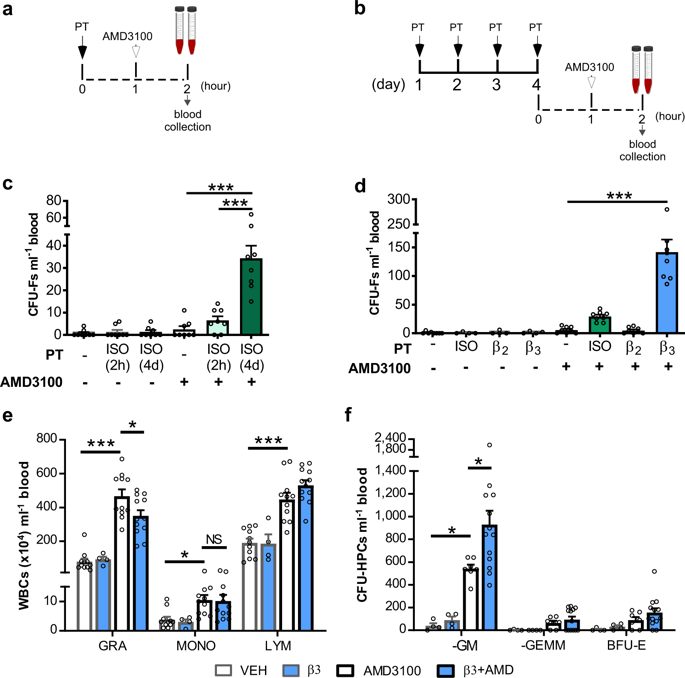npj Regenerative Medicine ( IF 6.4 ) Pub Date : 2020-02-21 , DOI: 10.1038/s41536-020-0088-1 Tariq G. Fellous , Andia N. Redpath , Mackenzie M. Fleischer , Sapan Gandhi , Samantha E. Hartner , Michael D. Newton , Moïra François , Suet-Ping Wong , Kate H. C. Gowers , Adam M. Fahs , Daniel R. Possley , Dominique Bonnet , Paula Urquhart , Anna Nicolaou , Kevin C. Baker , Sara M. Rankin

|
Therapeutic approaches requiring the intravenous injection of autologous or allogeneic mesenchymal stromal cells (MSCs) are currently being evaluated for treatment of a range of diseases, including orthopaedic injuries. An alternative approach would be to mobilise endogenous MSCs into the blood, thereby reducing costs and obviating regulatory and technical hurdles associated with development of cell therapies. However, pharmacological tools for MSC mobilisation are currently lacking. Here we show that β3 adrenergic agonists (β3AR) in combination with a CXCR4 antagonist, AMD3100/Plerixafor, can mobilise MSCs into the blood in mice and rats. Mechanistically we show that reversal of the CXCL12 gradient across the bone marrow endothelium and local generation of endocannabinoids may both play a role in this process. Using a spine fusion model we provide evidence that this pharmacological strategy for MSC mobilisation enhances bone formation.
中文翻译:

动员间充质基质细胞进入血液的药理工具可促进手术后的骨形成
目前正在评估需要静脉注射自体或异体间充质基质细胞(MSC)的治疗方法,以治疗包括骨科损伤在内的多种疾病。另一种方法是将内源性MSCs动员到血液中,从而降低成本并消除与细胞疗法发展相关的监管和技术障碍。然而,目前缺乏用于MSC动员的药理学工具。在这里,我们显示β3肾上腺素能激动剂(β3AR)与CXCR4拮抗剂AMD3100 / Plerixafor结合,可以将MSCs动员到小鼠和大鼠的血液中。从机理上讲,我们证明了CXCL12梯度在骨髓内皮细胞中的逆转和局部产生的内源性大麻素都可能在此过程中起作用。











































 京公网安备 11010802027423号
京公网安备 11010802027423号